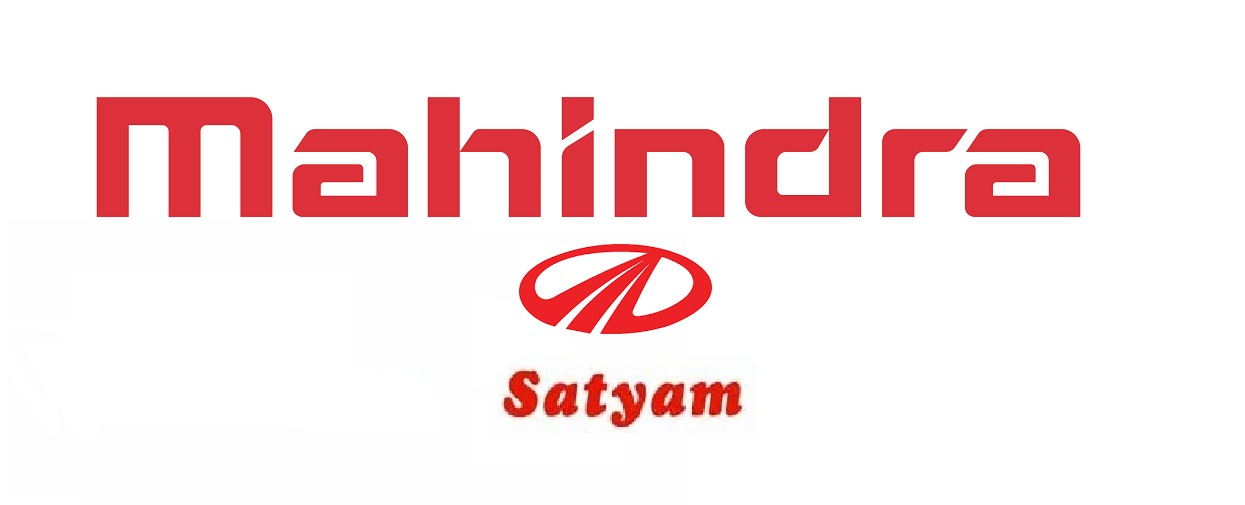In September 2008, Satyam, the then sixth largest India-based IT services company, received the coveted “Golden Peacock Global Award for Excellence in Corporate Governance”. Then, just four short months after this recognition, one of the biggest cases of fraud in the Indian IT service industry came to light, with the firm’s Chairman B. Ramalinga Raju admitting to financial fraud to the tune of US$1.5 billion.
The industry was shaken. The company’s stock and fortunes crashed.
Satyam’s much-needed rescue support came from the Indian government and the new Satyam Board, which consisted of numerous stalwarts from the Indian industry. This provided the required handholding to avoid a complete collapse, protect the interest of its employees and clients, and uphold the image of the Indian IT industry. Consequently, a sense of stability was achieved in April 2009 when Tech Mahindra won the bid to acquire a majority stake in Satyam (which was later renamed to Mahindra Satyam).
Since then, the company went through struggles, twists, and turns, and finally reached a steady stage under the Mahindra umbrella. The formal merger of Mahindra Satyam with Tech Mahindra in June 2013 made “Satyam” brand history. The combined entity retained the name “Tech Mahindra”. This article focuses on how the integration strategy of Tech M helped to restore Satyam to health from the brink of collapse.
The real story on how Tech Mahindra successfully integrated Satyam into its own fold and saved a company from closing down
Drivers of change:
MD and CEO of Tech Mahindra CP Gurnani and Executive vice-chairman Vineet Nayyar were the chief drivers. Between them, Nayyar and Gurnani divided responsibilities. While Nayyar was to look at legal and investor issues, Gurnani would be focused on the customers and employees and COO Rakesh Soni was the man on the ground running operations.
Luring the Customers Back:
The Satyam brand name back in 2009 was a huge liability. Overseas clients left in droves (350 of the 650 big clients left within three months after Raju’s confession) and very few wanted any link with a company whose cupboards were perceived to be full of skeletons. Satyam lost some very prominent customers, including State Farm Insurance, British Petroleum and Coca-Cola, after the scandal.
The government-appointed directors, to begin with, called up most large customers to say things would be all right soon. They told the customers that the company’s core strength, its delivery capabilities, was intact. Had it not been for them, the run on Mahindra Satyam could have been worse. Mahindra Group Vice-Chairman Anand Mahindra and C P Gurnani took over from where these directors had left off. Between the two, they met all the large customers to convince them to stay with the company. In the first six months, Gurnani met over 150 customers across the globe. Customer meets were organized in London and Chicago to answer their queries. Analyst conferences were held in Hyderabad, London, and Boston to apprise them of what the company was doing. Mahindra Satyam ran a program aimed at getting lost customers back, known as Win Back.
The efforts paid off as some old customers came back; at the same time, 44 new customers, as well as the renewal rate on contracts from existing clients, also increased. The company then leveraged its relationships with companies such as General Electric Co., AT&T Inc., and Cisco Systems Inc. to get new business, requesting them to put in a good word on their behalf.
Given the enormity of the scam, the loss of customers was not unexpected. But getting the lost customers back was extremely crucial for Mahindra Satyam’s survival. Holding various conferences and meets with customers put across the point that the new management was ready to answer questions by maintaining transparency. It was a good strategy on Mahindra Satyam’s part to leverage its relationships with existing client as it helped in restoring to some extent the company’s credibility which had taken a hit.
Resizing the Work Force:
In 2009, the biggest challenge facing Satyam’s new management was restoring the confidence of investors, clients and employees—with many of the latter two leaving the tainted organization. Before Ramalinga Raju made his confession about cooking up his company’s books, Satyam had almost 50,000 employees. In just two months, that number shrunk by over 3500 mainly from people who matter most – mid and senior level staff.
The Satyam employees were feeling a potpourri of emotions ranging from anguish, disbelief, hurt and surprise. With inflated income taken out and almost 350 customers walking out, the workforce of 50,000 was too large for Mahindra Satyam. Here the Mahindra Satyam management came up with an innovative way to rationalize the workforce. When companies moved projects away from Satyam, they were requested to take the teams along. Over 80 percent of the departing customers agreed to this request. About 6,000 people left of their own accord. A separation scheme was also put in place, which was accepted by 9,000 people. As a result, Mahindra Satyam was able to rationalize the employee strength to 28,000.
Employee Integration is one of the major factors responsible for the success of a deal. The existing workforce of Satyam was too large for Mahindra. Given the then existing scenario, it was normal for the employees to feel mistrust and anguish towards the new management as their jobs were on the line. The Mahindra Satyam strategy ensured that the large employees were not laid off but instead was taken away by the customer companies. Negativity amongst the employees would have made the road to recovery even more difficult for Mahindra Satyam. The move instilled a feeling of trust among the remaining employees that their well-being was also being thought of and infused positivity and hope; thus accelerating the road to recovery.
Changes in Levels of Management:
The new Mahindra Satyam management was completely focused on earnings and cost control, which had eluded the erstwhile Satyam that Raju ran. So on June 20, 2009, Gurnani announced that he was reducing the existing 13 layers of management to 6 at Satyam over the next three years. To oversee the transition, 10 people from Mahindra & Mahindra were brought in Satyam’s leadership team. Alongside, 5-6 leaders of Satyam were let go, particularly in the legal and finance functions, where the toxicity was maximum, as top-level transfusion became the need of an hour.
The new management was of the view that from a good governance perspective it would be better if a Tech M representative was running certain areas. Also from the point of view shareholder value protection, it was important that people saw a face that was more aligned to Tech M than then erstwhile management of Satyam. At the same time, from the Satyam’s employee’s point of view, Hari Thalapalli the then chief marketing officer of Satyam was asked to become chief people’s officer again because the 50,000 people he had hired needed morale boosting. Perhaps the icing on the cake was the grit and determination of Satyam’s own rank and file to break the jinx and find purpose in uncertainty.
Given the already volatile conditions, ensuring that the new management was proactive was the need of the hour. With the scam happening at the senior management level it was necessary to put together a management model that would instill confidence. Having Tech M representatives in certain areas of top management ensured that stakeholders interest were protected, but at the same time appointing an existing Satyamite as Chief People’s Officer ensured that the employee’s confidence didn’t take a hit. Ensuring a mix of both Satyam and Mahindra representative helped in improving the tainted image of Satyam.
Readjusting the Cultural Code:
The earlier Tech M culture was more like a family since they were a smaller outfit but now that they had inherited a big company, they had to create a company which was more entrepreneurial. The aim was to bring up a new culture which was not Tech Mahindra culture or Satyam culture but a New Tech Mahindra culture. The idea was to get people from the erstwhile Satyam and Tech Mahindra to sit together and thrash out a new vision. As a result folks at Satyam were allowed to do celebrate failure, which was an integral part of Satyam legacy. They celebrated failure as they failed to be alert and to ensure that they never repeated the same mistake.
The new Management setup an example in transparency and triggered the two Cs of rejuvenation—Communication and Cleansing. An open source policy was adopted at Mahindra Satyam. A CEO doing skip level meeting or walking into any room at any office was a novelty at Satyam. The Cultural code at Mahindra Satyam saw a radical shift from that at Satyam. The Vice Chairman and CEO were totally glued at the ground level. There was an action-oriented team who went down to project level details. Nothing could come as a surprise to this management. The CEO knew hundreds of employees by name. Maverick moves apart, it was the infusion of risk appetite that caught the fancy of Satyam associates.
Aligning corporate culture is of prime importance from M&A perspective. There are various ways of doing it: Mergers where leaders stick to their own values and proclaim: ‘My values first!’ Result: creating winners and losers. It is an open door to destroying value. The second type is to abandon your own orientation and to go native. A ‘When in Rome, do as the Romans do’ approach is adopted. Result: other cultures will mistrust you and you won’t be able to offer your own strengths to the merger. And the third one which Mahindra Satyam adopted is Reconciling Cultural Difference, i.e taking the strengths of both sides and turning it into something new that is even stronger. The move helped in improving the working atmosphere thus, resulting in better productivity.
Finances:
Satyam was completely crippled by the time Tech M took over the company. Alongside losing key accounts, Satyam faced a $610 million wipe out its actual business crumbled from $1,600 million. In effect, Tech Mahindra bought over a $990 million company, which Raju had claimed was $2,200 million in revenue terms. Besides, when Nayyar, a former director of the Department of Economic Affairs, scanned the books from 2002 onward, he realized that Satyam never had an EBITDA of over 3%. From the share price of Rs 250 in late 2008, the price fell to as low as Rs 11.50 post the scandal. It was not just a financial turnaround that needed to be done or an irregularity that had to be set right — the pride of a people had to be restored. After losses of Rs 8,174 crore in 2008-09 (because of provisioning of Rs 7,992 crore for Raju’s misdemeanors) and Rs 124 crore in 2009-10, Mahindra Satyam reported a profit of Rs 120 crore in the first six months of 2010-11. And going by the latest quarterly results (Jun-Sep, 2013), the marriage seems to have worked fine, with revenues up 4.7% sequentially at $758 mn.
Finally, when the merger of Tech M and Mahindra Satyam was announced on June 24, 2013, functions of the two companies collapsed into one. Along with 84,000 people, the combined entity glowed under an enviable 21% EBITDA with 550-odd clients. The swap ratio of the scheme was 2:17, i.e. two shares of Tech Mahindra for every 17 shares of Mahindra Satyam. Tech M had said that it wanted a marriage of equals. It is commendable on Tech M’s part to nurture Mahindra Satyam to a certain level of profitability before merging it with Tech M so as to be fair to the shareholders of Satyam, who had lost a great deal owing to the way the previous owners ran it.
Conclusion:
The value of the share of Satyam in the hands of shareholders back in late 2008 was nearly Rs. 4250/-. Post scam that value dropped to nearly Rs.195/-. The shareholders lost approx. 4055/-, i.e almost 95.41% value of their holding. The average stock of Satyam post scam traded at Rs.18/- to Rs.20/- per share. Thus if the merger would have happened earlier the shareholders would still have lost close to an average of 92%. Tech M needs to be commended for waiting and thus giving the shareholders a fair value for their holding. The current share price of Tech M is Rs.1696/- .Thus, the shareholders get a value approx of Rs.3392/- for their holding, reducing their loss to an approx of 20%.
Merging two or more organizations seriously disrupts the identities of the two involved organizations, generates fear of identity loss on one or both sides and raises questions about the identity of the new combination, which may hinder trust in and identification with it. Thus Post-merger Integration plays a vital role in the future success. In merger situations, employees feel a loss of identity and engagement and motivation levels dip. So acquiring company’s leadership needs to ensure that the integration process is smooth and the workforce feels that it is in safe hands. In the case of Mahindra Satyam, the new management had an onerous task of cross-pollinating the positive news from Tech Mahindra to Satyam. According to Gurnani, Satyam’s account planning was better, their management system was better, their tools were better. So instead of forcing integration, Gurnani, and his team relied on slow but steady osmosis. Instead of highlighting what folks at Tech M didn’t do so well, they focused on positive reinforcement. The team needs to be congratulated for its efforts in bringing about the biggest makeover in India Inc. and changing the meaning of Satyam from being synonymous with fraud to rejuvenation.




